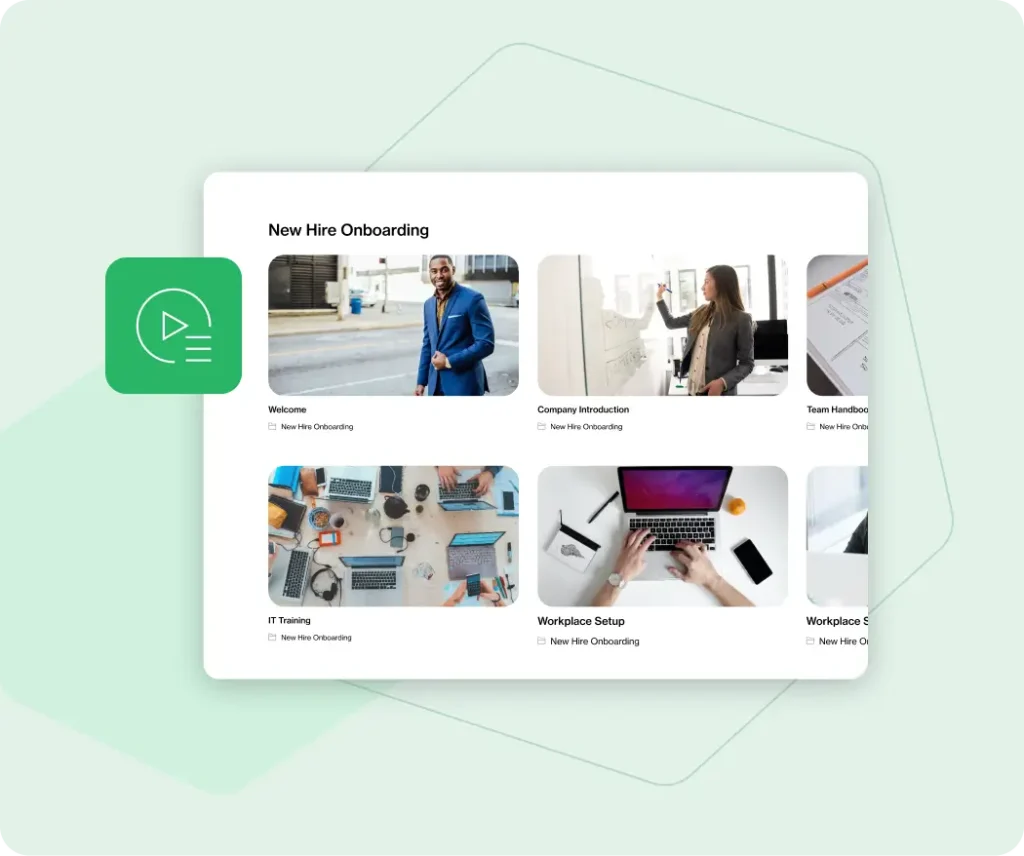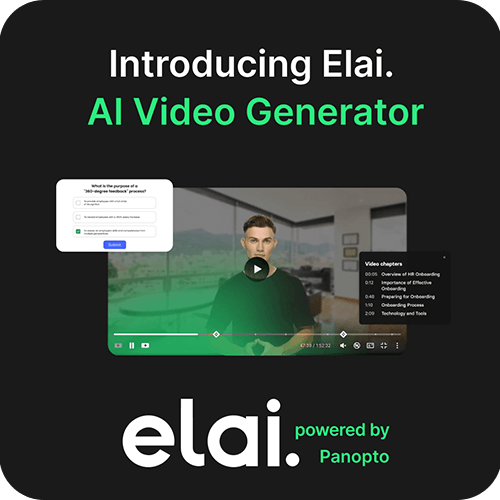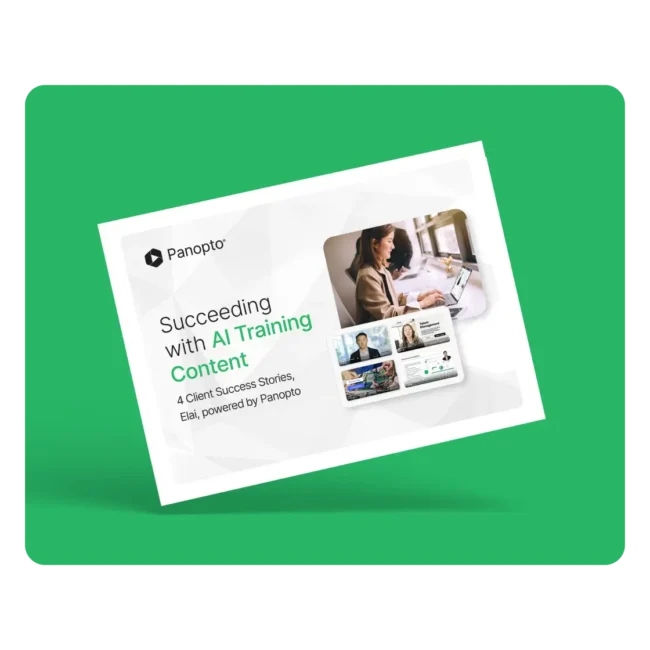- Learning and Development
How to Optimize and Improve the Onboarding Process

If you’re a business leader, it’s important to stay on top of ways to improve your onboarding process. Whether it’s for job-specific training, benefits enrollment, or upskilling to keep pace with industry changes, onboarding can make or break your organization’s success.
Here are some tips to optimize and improve your onboarding process.
Two Things to Know to Improve Your Onboarding Process
Employee onboarding contains training tasks to welcome an employee to a company and make sure new hires are prepared to succeed in their roles. The employee onboarding process is designed to bring new talent up to speed as quickly as possible to begin to contribute to the business productively. Good employee onboarding practices lead to higher job satisfaction, better job performance, and employees with a more substantial commitment to their organizations. To remain competitive, learning and development (L&D) decision-makers must optimize and accelerate employee onboarding and training.
An impactful employee onboarding program accomplishes two things:
- Acclimates the new hire to the company culture and enables them to build connections that will keep them engaged and productive.
- They provide the training and coaching they need to produce and contribute to company objectives.
Onboarding programs may include in-person training reviewing day-to-day tasks, handouts highlighting company culture, and maybe some non-company-specific videos reviewing topics like security practices. However, as companies and cultures advance, employee training programs are changing to include a mix of new technologies and processes to increase efficiency and scalability, such as asynchronous employee onboarding.
21 of the world’s 25 top Universities use Panopto
What is Asynchronous Employee Onboarding?
With the increase of remote and hybrid work environments, L&D teams have evolved to maintain communications with new employees. Many companies are adopting asynchronous employee onboarding—in other words, onboarding that is available on demand rather than via live sessions.
Asynchronous communications are back-and-forth exchanges with a delay between messages or one-way communications that can be received by an audience at their convenience. Utilizing asynchronous communications in onboarding programs means that new employees are primarily trained through previously created mediums, whether emails, recorded meetings, or on-demand video messages. Rather than one-off live meetings or video conferences, asynchronous onboarding empowers employees to engage with the material in the time, place, and manner that’s most useful for them – and it’s highly effective.

How Does Video Improve the Onboarding Process?
A secure, internal video learning library enables forward-thinking companies to deliver engaging, effective onboarding programs at scale. Video onboarding can:
- Reduce training costs: Employee onboarding is an expensive task. According to management consultants Mark Stein and Lilith Christiansen in their book Successful Onboarding, companies spend up to 30% of a new hire’s annual salary during the onboarding process. However, asynchronous video can decrease training costs exponentially by eliminating the need for costly in-person training.
- Improve knowledge retention: Did you know that video has been shown to improve people’s ability to remember concepts and details? By using video during onboarding, employees are more likely to retain information. As a bonus, a robust video management system offers searchability features that enable users to search videos for spoken and written words should they have questions after their onboarding is complete.
- Keep content updated: Video ensures that L&D teams maintain consistency across all training sessions and can update training videos when needed easily.
- Inspire employee engagement and connectedness: Video is personal. It can introduce team members, deliver messages with a human element, and connect teams whether they are 5 feet or 5,000 miles away.
- Track measurable outcomes: Analytics offered through video management platforms allow L&D teams to better understand employee engagement with on-demand onboarding videos. These metrics share what training videos are used the most, where new employees may need additional learning, and whether or not employees are completing the required training for compliance purposes.
Essential Tools for Virtual Employee Onboarding
Video has already become the foundation for sharing knowledge in a distributed world, and many L&D leaders are leveraging asynchronous video to conduct onboarding and training. On-demand onboarding videos offer a flexible, detailed medium for communication. Viewers can watch the videos anytime, from any location, and search and watch them again later.
To effectively manage your video onboarding program, there are three main tools in a communication ecosystem that help L&D leaders capture, share, and access valuable knowledge when and where they need it. This results in higher engagement and productivity for new employees.
- Video Conferencing Software. Video conferencing solutions like Zoom, WebEx, and Microsoft Teams offer an opportunity for real-time training.
- Learning Management System. Many L&D teams use a learning management system like Cornerstone, Docebo, or SAP SuccessFactors to house, deliver, and track training content in one place.
- Video Management System. A video management system like Panopto is a central, secure, and searchable channel for an organization’s onboarding resources. Think of it as a corporate YouTube that transforms your onboarding material into on-demand knowledge that is accessible anytime.
“Panopto is an efficient and useful tool because we can reach anyone, anywhere with the same information. It’s really helped us expedite training and save hundreds of hours.”
Jayme Bicknell, Marketing Manager, American 1 Credit Union
How to Improve Your Onboarding Process with Video
Asynchronous video onboarding offers an optimized, scalable solution to improving the new employee experience. Video onboarding is attainable for any organization—and it doesn’t need to be difficult. Seven core steps are required to plan and execute an effective video employee onboarding program.
7 Ways to Design Onboarding with Video
- Identify a set of core onboarding training activities for every new employee.
- Determine which of the onboarding activities can be optimized with on-demand video training.
- Plan a weekly onboarding schedule for each new employee’s first 60 or 90 days.
- Repeat the above steps with role-, department-, and location-specific videos.
- Document the process and share it with other departments so they can add additional content.
- Make the onboarding experience consistent with automated messages.
- Use video analytics to monitor viewing activity.



